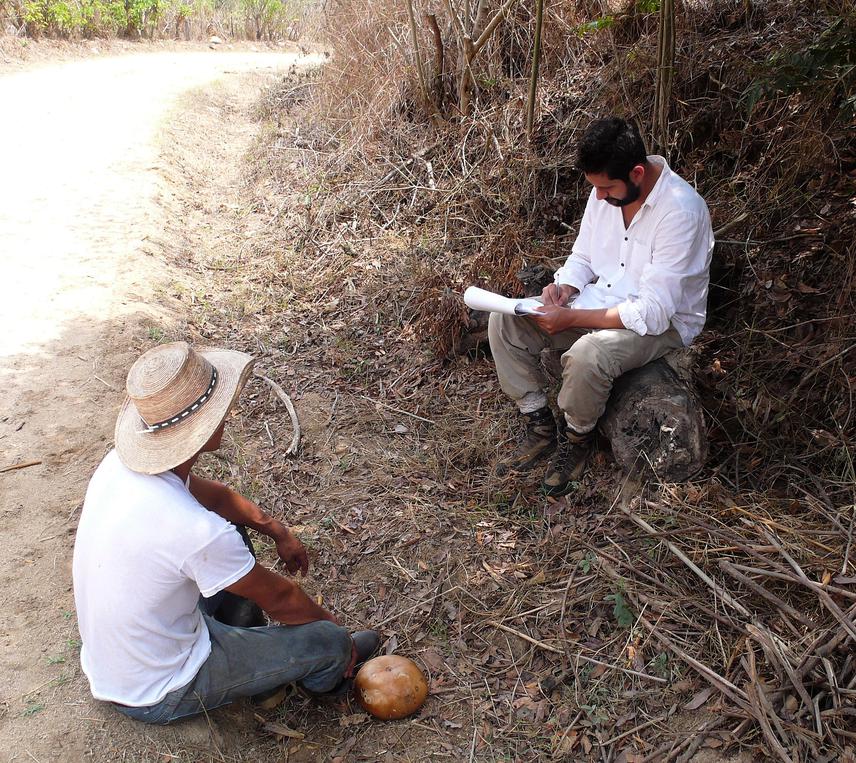Tlacaelel Aaron Rivera Nunez
1. To dilucidate in detail how agroforestry projects are internalized in the labor-consumption economic balances of peasant households, through ethnographic research and structured interviews.
2. Carry out participatory mappings to measure the extent of forest clearings by subsistence agriculture.
3. Formalize a social network analysis to elucidate the agrifood supply at the watershed level, and to know structural and dynamic features of the networks such as their endogeneity-exogeneity arrangements and price increase routes.
4. Design and implement a socio-ecological board game that allows us to reflect, with rural households and other strategic actors, on the possibility that the articulation of local agrifood networks represents to contribute to more efficient peasant balances and to stabilize the agroforestry-forestry interface.
5. Co-develop and implement, with the peasant organizations of the watershed, a work plan that stipulates the mobilization of resources and capacities required to articulate local agrifood networks.

Stabilizing forest frontiers (FFs) in MAB-UNESCO Biosphere Reserves (BRs) - in which in the majority of cases the population largely depends on agriculture - is a political and academic challenge. In La Sepultura BR, governmental agencies and NGOs have promoted to stabilize the FFs by furthering the following three agroforestry projects in the peasant communities located in the upper part of its main watershed: shade coffee cultivation, Pinus oocarpa resin extraction, and forest understory Chamaedorea palm production. Although these projects seem to be stopping and even reverting the land use changes at the FFs, they are currently showing instabilities associated with the negative economic balances of peasant families that, when specializing in agroforestry production, now have to buy expensive basic agricultural food products to merchants from outside the water basin. This begins to cause an increasing number of households that decide to return to subsistence agriculture, and carry out forest clearings that can affect the quality of the habitat and biological corridors of more than 120 species of flora and vertebrates under some status of conservation according the Mexican Regulations (NOM-059-SEMARNAT-2010) or the IUCN Red List of Threatened Species.
On the other hand, in the lower part of the watershed corresponding to the area of the BR where agricultural activity is mostly allowed because it corresponds to historically impacted secondary vegetation zones, the communities specializing in the production of peasant crops and silvopastoral livestock have to sell their products extremely cheap to external intermediaries, because they do not have the logistic and material capacities to store, transport and market the products on an intercommunity scale.
In this sense, the project that I lead, through the application of innovative approaches such as conservation social science, human dimensions in natural resources management and conservation trade-offs, aims to develop an Action-Research Agenda able of accompanying peasant communities in the articulation of local agrifood networks between the lower and upper part of the watershed, capable of adjust the negative balances of the domestic economy in both groups, which would directly reverse the agricultural clearings in the agroforestry-forestry interface corresponding to well-conserved mesophilous mountain forest, pine-oak forest, high evergreen forest, and evergreen cloud scrub.